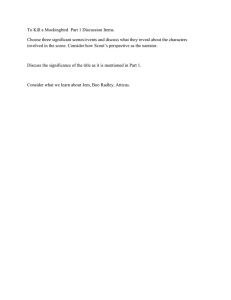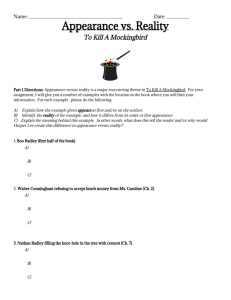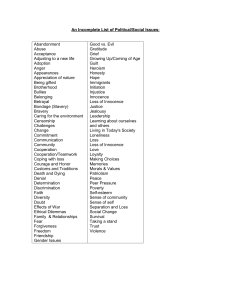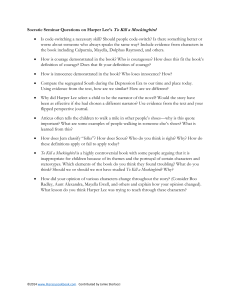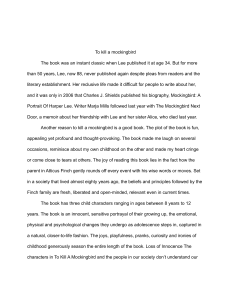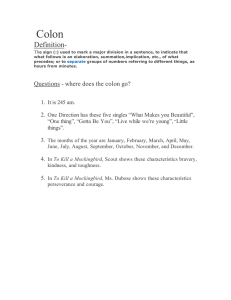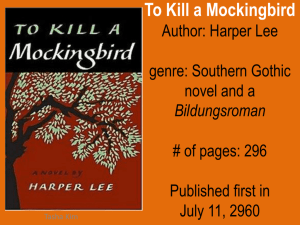In To Kill a Mockingbird, how does the theme of childhood innocence versus the harsh realities of the adult world impact the main characters
advertisement
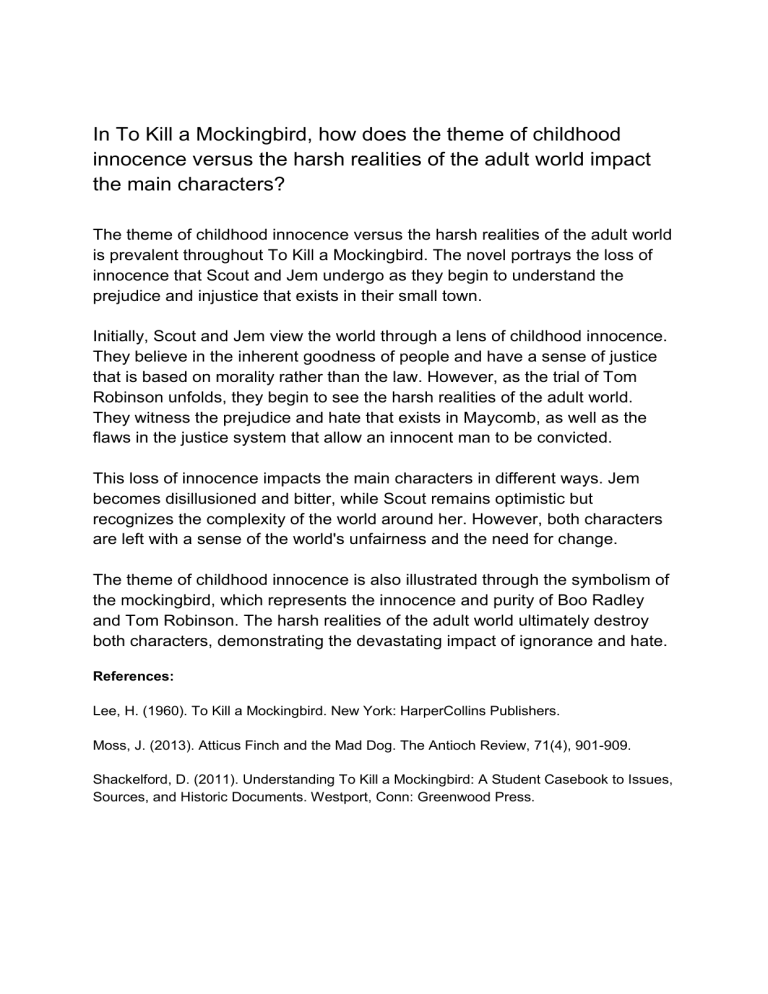
In To Kill a Mockingbird, how does the theme of childhood innocence versus the harsh realities of the adult world impact the main characters? The theme of childhood innocence versus the harsh realities of the adult world is prevalent throughout To Kill a Mockingbird. The novel portrays the loss of innocence that Scout and Jem undergo as they begin to understand the prejudice and injustice that exists in their small town. Initially, Scout and Jem view the world through a lens of childhood innocence. They believe in the inherent goodness of people and have a sense of justice that is based on morality rather than the law. However, as the trial of Tom Robinson unfolds, they begin to see the harsh realities of the adult world. They witness the prejudice and hate that exists in Maycomb, as well as the flaws in the justice system that allow an innocent man to be convicted. This loss of innocence impacts the main characters in different ways. Jem becomes disillusioned and bitter, while Scout remains optimistic but recognizes the complexity of the world around her. However, both characters are left with a sense of the world's unfairness and the need for change. The theme of childhood innocence is also illustrated through the symbolism of the mockingbird, which represents the innocence and purity of Boo Radley and Tom Robinson. The harsh realities of the adult world ultimately destroy both characters, demonstrating the devastating impact of ignorance and hate. References: Lee, H. (1960). To Kill a Mockingbird. New York: HarperCollins Publishers. Moss, J. (2013). Atticus Finch and the Mad Dog. The Antioch Review, 71(4), 901-909. Shackelford, D. (2011). Understanding To Kill a Mockingbird: A Student Casebook to Issues, Sources, and Historic Documents. Westport, Conn: Greenwood Press.
